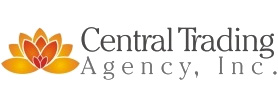Almost all procurement done by an organization happens in stages that make up the procurement lifecycle. Identifying these stages is an important step as it provides a formalized way to analyze the procurement process, discover any weaknesses in it and help formulate ways in which those weaknesses can be addressed in the future. The segmentation of the procurement lifecycle also enables a more precisely targeted approach to managing the entire process which saves time and resources if any issues should arise which jeopardize the effectiveness of the entire process.
1. Defining the Need and Developing Specification
The first stage of the procurement lifecycle is identifying and then defining the business need. Through the involvement of various stakeholders from within the organization, it is possible to develop a high-level specification which is at the core of every efficient procurement process.
A high-level specification will involve a number of factors defined by various stakeholders so as to ensure consistency in product quality, pricing, fit-for-purpose and operational functionality. By developing a high-level specification, the organization minimizes the chances of substandard procurement that may have adverse effects in later stages of the lifecycle.
2. Analyzing the Market and Developing a Strategy
Once a high-level specification has been developed, an organization can proceed to market analysis in order to best develop a strategy that will provide the most value. By factoring in the organization’s spend, current positioning and the overall dynamics of the market, the organization's procurement department can perform early identification of potential suppliers.
Market analysis should also factor in the organization's existing policies, practices and partnerships. If the organization already does business with a supplier that might be involved in this new procurement process, it’s always best to start there. The organization’s standard policies and practices regarding, for example, working with local vs. global suppliers should also be part of the market analysis.
This early market analysis will also provide insights into the degree of competition between potential suppliers. This is crucial when developing a strategy as it will determine how much leverage the organization will have in negotiating contracts with suppliers.
3. Developing Documentation
By reverting to the high-level specifications that were developed earlier, the organization will next start developing the documentation they will require to issue the tender and evaluate individual bids by potential suppliers.
Tender documents will involve an as detailed as possible breakdown of volumes, terms, and conditions; a service level agreement and a more detailed specification that will be based on the initial one but modified with insights gained through market analysis.
A pre-purchase questionnaire (PPQ) should also be developed at this stage as a preliminary checkpoint that will identify potential suppliers with the right commercial, financial and technical competencies, as well as their interest to be involved in the upcoming tender.
4. Conducting RFI and Selecting Suppliers
The next stage of the procurement process is formulating and conducting a request for information (RFI) which will help you gather more information on the potential suppliers than the preliminary PPQ. Through RFI, an organization will learn about suppliers size, financials, capabilities, and strengths, and weaknesses.
These insights will then be ranked against the business needs and this process should involve all the key organization stakeholders. The RFI should then also be reviewed with consideration to selection criteria, providing the organization with the final list of suppliers to invite to tender.
5. Issuing ITT and RFQ
Once the selection of suppliers has been made, the next stage involves sending out a formal Invitation to Tender (ITT) and Request for Quotation (RFQ). Along with these, organizations will send out the specification and the additional documentation that has been developed to identify formal business requirements. An important thing to remember is to also include the clearly defined timeframe in which the bids (or other responses) should be submitted.
6. Evaluating Tender
The next stage in the procurement lifecycle is evaluating and validating the bids submitted by potential suppliers. It is essential that this process is structured, transparent and disciplined.
The actual evaluation will consider a number of factors such as the prices cited, technical capacities and capabilities of various suppliers, as well as the quality of service they promise and their financial health.
Once the evaluation is made, post-tender checkups have to be performed, including credit checks, reference checks, technical audits, product sampling and supplier visits.
If needed, this is also when post-tender negotiations are done, further clarifying any possible points of contention down the line.
This stage is completed once a supplier has been chosen.
7. Awarding Contracts
Upon deciding on the supplier, it is time to draw up a contract that will be satisfactory to both sides and that will be as comprehensive as possible. The obligations of both parties should be clearly defined in the contract, as well as key performance indicators (KPIs) which will ensure that both parties gain value from the contract and the future relationship. The contract should also minimize contractual risks by including agreed-upon terms and conditions, as well as describe the procedure in case one of the parties has an issue with the other party’s compliance with the contract.
Both parties will then start implementing the contract, honoring the timescales and parameters that will ensure adherence to the terms and conditions outlined in the contract.
8. Managing Receipt and Warehouse Logistics
The next thing an organization will do as a stage in the procurement lifecycle is managing the receipt of goods and ensuring that warehouse logistics are organized in a way that will speed up the processing of newly received goods. This entails product classification and coding, layout, space considerations, managing delivery frequencies, order booking, and processing. The end goal is to make the receipt process as efficient and streamlined as possible.
9. Reviewing Contract Performance
Organizations have to periodically review the performance of the new contract against KPIs outlined in it. They should also review and analyze any issues that may have arisen between the two reviews, also engaging in discussions and strategies for future improvement of the contract and the supplier relationship in general.
10. Doing Continuous Supplier Relationship Management
Depending on the size and the scope of the contract, its duration and the potential for future business with the supplier, organizations will commit an appropriate amount of time to supplier relationship management (SRM). This will entail the aforementioned contract reviews and communications with the supplier that will help build a strong relationship between the two parties. Streamlining processes and uncovering potential for more business can lead to an even better relationship that will add value to both parties.
Closing Word
It is essential for organizations to understand their procurement lifecycle as it will allow them improved insights into individual stages and the overall performance of their process. It can also help in future modifications and improvements of the procurement process.
Organizations that decide to outsource their procurement to Central Trading Agency can rest assured that their procurement lifecycle will be developed, refined and executed as meticulously and as efficiently as possible.

